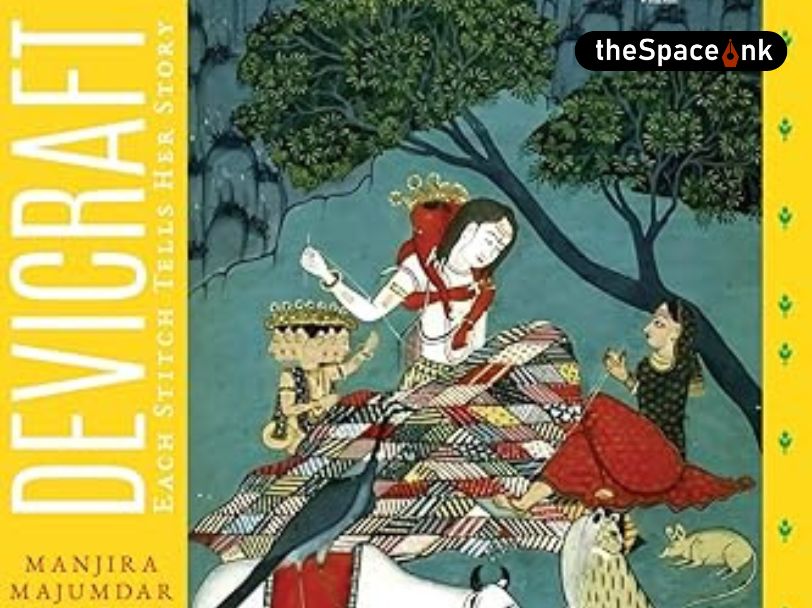In 1982, Mrinal Sen made Kharij. In 2023, director Kaushik Ganguly made ‘Palan’, produced by Pramod Films as his tribute to the ace director in his centenary year. In an exclusive chat with thespace.ink, Ganguly opens up about his craft and how he has used it to pay respect to another man’s philosophy of life in general.
Showli: Why did you choose to make a sequel for Kharij and not any other film of Mrinal Sen?
Kaushik: The year was 1982 and I was probably in Class VI or VII. My first encounter with Mrinal Sen’s work was through his film, Kharij. At that time I knew nothing about films, I didn’t even know who Mrinal Sen. I had read about carbon monoxide only in textbooks. So, I was really touched when I watched the film. Here was a boy who was almost as old as I was at that time. He was working at a middle-class home as a house-help and he had died this unnatural death. It was a huge thing for me, the story in itself. Even in the house where I grew up, young boys whose parents couldn’t afford to feed a large family would send them to work long before they reached adulthood. They came from very poor backgrounds and their conditions at home were so bad, that they had no option but to work. We also had a lady who would work at our home, while her son and daughter stayed and went to school. The children also did some work in the house. Not just one, there were many such young boys who came to work for us over the years. So, I could really identify with the film as a young boy myself.
Showli: And when you grew up?
Kaushik: When I grew up and watched Kharij again, this time I looked at it with different lenses. I realised as a filmmaker that you don’t always need a story to make a film. What you really need is a situation, an ability to analyse the depth of the situation and the kind of impact that particular situation can have on people around you or society as a whole. This much was enough to make a film. In such cases one needn’t harp on the storyline, for the sake of entertainment alone. So, the kind of emotions that we as humans go through, the emotional turmoil, the anxieties and the various ups and downs in life is enough to make a film work. And, this is how I discovered Mrinal Sen as a filmmaker.
Also read: Interview: Actor, Performer & Acting Coach Benny Basu
Showli: What kind of impact did Mrinal Sen have on you as a filmmaker over the years?
Kaushik: For me, Mrinal Sen is the first filmmaker I can think of who made films around such pressing situations or pressing issues of the society that we live in. All over the world such cinema is held in high regard, appreciated by many. When I saw his films I decided that this was the kind of filmmaker I would want to become. For his centenary year, I wanted to celebrate Mrinal Sen’s ideology and his way of looking at life. I wanted the same actors and same characters as in Kharij because I wanted to explore the maestro’s way of bringing to screen a very different yet sensitive manner of filmmaking.
https://www.youtube.com/watch?v=q27viSw0l8M
Showli: Are you planning to make any other films as a tribute to Mrinal Sen? Do you think people are equally geared up about Mrinal Sen’s centenary year, as they were about Satyajit Ray’s centenary year?
Kaushik: I’m not making any other films to pay him a tribute. Palan is the only one. You see, when people are planning a tribute through films there are two ways to go about it. One, you could make a biopic, or second, you could make a film based on a person’s ideology. I chose to go with Sen’s ideology and philosophy of life. I chose to talk about his method and his range as a filmmaker through my craft. But there are others who are planning several tributes based on his life as a journey rather than his process of filmmaking. So there are two different kinds of views that people have on this. I paid my tribute to Ray long before his centenary year, through my film ‘Apur Panchali.’ That is my way of doing things. As a fellow filmmaker, I would like to wish all of my colleagues the very best in whatever manner they are planning to showcase their tributes to Mrinal Sen.
Showli: How did you choose the setting for the film, that particular house for instance?
Kaushik: After watching ‘Kharij’ over and over again I had a fair idea about what I wanted to do. You see, in Sen’s film the house was actually a set. It was not a real house but a two storey set built by Nitish Roy. In fact Nitish Roy even won a National Film Award for Art Direction for ‘Kharij’ in 1983. So, it was quite a challenge to find the right house that fit the ambience of the house, after 44 years that have gone by in between. I didn’t want to build a copy of that set but I wanted a house that would fit into my aesthetics behind the storyline. For example if a song is sung by a man and a woman, it adds a totally different flavour to the song. Similarly, if the house is a character in the story then the set and the real house can sing the tale of their existence, thereby adding a whole new dimension to the story.
After watching ‘Kharij’ over and over again I had a fair idea about what I wanted to do. You see, in Sen’s film the house was actually a set. It was not a real house but a two storey set built by Nitish Roy. In fact Nitish Roy even won a National Film Award for Art Direction for ‘Kharij’ in 1983. So, it was quite a challenge to find the right house that fit the ambience of the house, after 44 years that have gone by in between.
Showli: As a filmmaker, how easy or difficult is it to make a film that is a psychological tale rather than one where something or the other keeps happening in quick succession?
Kaushik: Yes, there are films which are full of emotional turmoil as one incident after another keeps unfolding on screen. That is one way of making a film. But our lives are not always like that. Usually, our lives move forward in a very ordinary manner, sometimes at a slow pace. Especially, if you look at people who are 70 years old or more, their lives are even slower. Like Anjan Sen in my film, who needs to move around with the help of a walker. Life moves very very slowly for such people. Such people need support in life, it could be a walker or someone who is close to them. Making a film to portray the everyday struggles of such people is definitely more difficult. In such films, there is more hype than sensitivity. That is the difference between cinema and film. Such films will have small things to bring out certain character traits, dabble with the depth of a person’s ideology and bring out his flaws in a very realistic manner. A filmmaker needs to hone his craft to bring it to that level and with a film like Palan, we are very happy to be able to have done that to a great extent.

Showli: Does box office success matter to you, when it comes to a film like ‘Palan’?
Kaushik: ‘Palan’ is not the kind of film which might ensure huge numbers at the box office, right from the beginning. Rather it is a film that will sensitize the audience. In West Bengal, there are hundreds of people who don’t sing Rabindra Sangeet. But, we all know how many people will sing Tumpa Sona, right from the word go…. You will hear Tumpa Sona being played in buses, autos, rickshaws, pan stalls and all over the place. But we hardly hear Rabindra Sangeet being played in buses, autos, rickshaws, pan stalls, etc. So everything has its own place in society. Each of these songs comes from different schools of thought, different gharanas of music. Similarly, people in Bengal don’t really know their best filmmakers or the kind of filmmakers who have made the best of films. Also, these same people will know the actors or the actress but will never bother to find out about the director or the art designer. So the psychology of the audience is very weird. This gap between populist and serious cinema was a huge one even a few years back. But with telefilms, the advent of satellite and technological advancement cinema has come closer to the audience both in rural and urban areas. The countryside is not so rural anymore. Hopefully, after OTT people have got to know us better and now we get recognized more often than we did earlier. In the future, hopefully things will be better.
Images courtesy: Sanjeet Chowdhury
A writer, journalist and radio presenter based in Kolkata.








